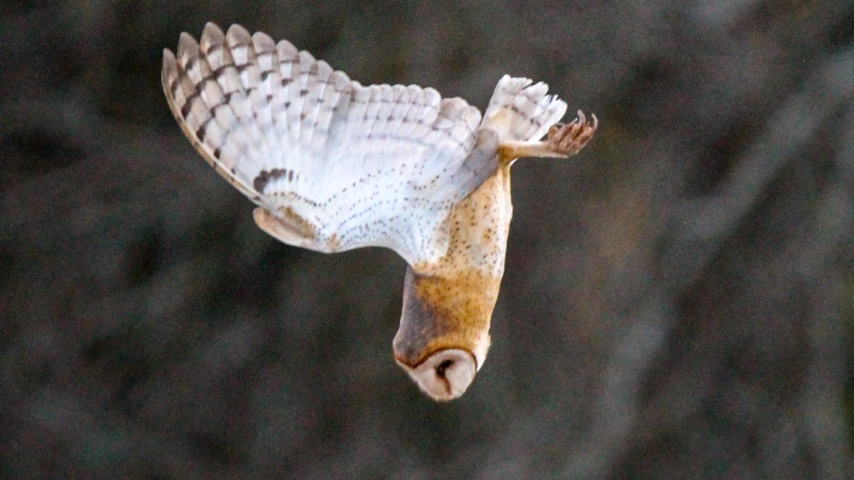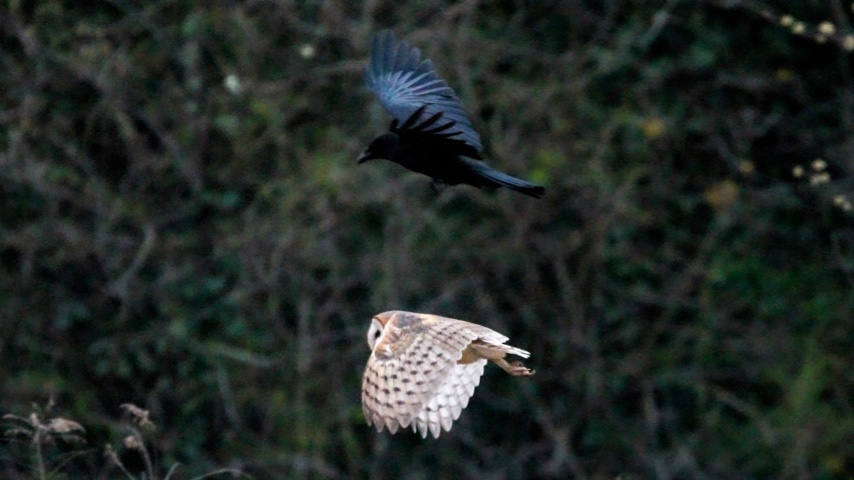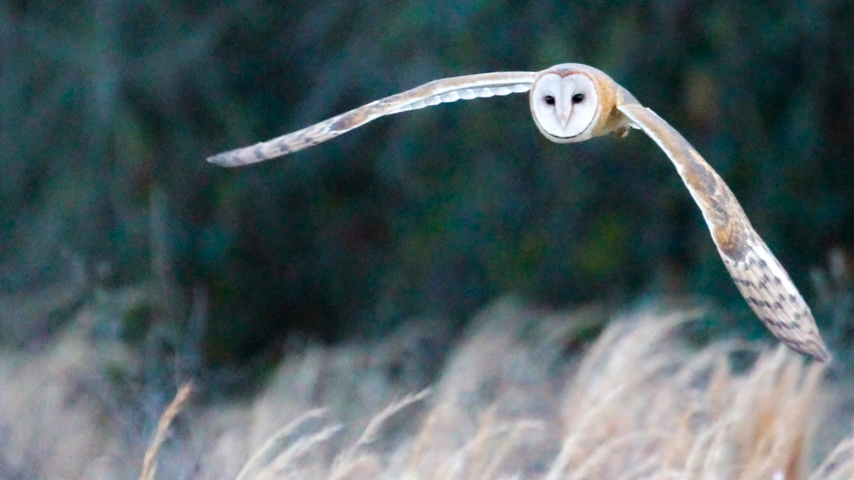An Urban Barn Owl Is My New Quarantine Friend
Photos by Josh Jackson
Legacy Park in Decatur, Ga., is not Central Park in New York, but a couple dozen people have been lined up with their tripods and telephoto lenses or binoculars each of the last several days. And they were all here at dawn to see an owl.
A Barn Owl is a rare sight inside Atlanta’s Perimeter. And one who has been putting on two shows a day like clockwork is even rarer. Barn Owls are usually nocturnal animals—as in the dead of night. They can pinpoint rodents scurrying around in the blackness thanks to asymmetric ears—quiet as a mouse isn’t quiet enough for a hungry Barn Owl. But this owl has been active every evening on either side of sunset since it was first spotted on March 2 and every morning from about 6:30am until about an hour after sunup.
Legacy—the former United Methodist Children’s Home that the city purchased for both greenspace and development—has acres of uncut grasslands perfect for sheltering voles and other small rodents. Barn Owls need to eat more than 10% of their body weight each day. Our Barn Owl makes long passes along the tree line, north of the ball fields and back around a large thicket, often doing something of a figure eight. Each time she passes near the outfield, camera shutters start furiously clicking. Her large wings make her a slow—and therefore quiet—flyer, a gift to amateur photographers trying to get their settings right in the low light.

She doesn’t seem bothered by the group of onlookers, only rarely looking in our direction like a celebrity giving the paparazzi the shot they crave. For that matter, she doesn’t seem particularly bothered by anything—not the Red-tailed Hawk that periodically swoops near nor the murder of American Crows squawking and mobbing her. Her focus is almost always on what might be moving in the grass, and when she hears what she’s looking for, she floats up and drops straight down, further aided in her ability to sneakily attack by unique feather structures designed for silent flight.
Out of sight down in the grasses, she can eat in peace, swallowing her food whole—the indigestible parts will come out in pellets later. But it’s eat-and-go, and 30 seconds later, she’s back on the hunt and mugging for the cameras.

I started birding near the beginning of the pandemic, and I’d been driving all over Atlanta before discovering Legacy Park—just two miles from my house—last August. There had only been a handful of 2020 check-ins on eBird, the app most birders use to record what they’ve seen in a particular location, when I decided to investigate what I’d only really thought of as a now-defunct orphanage. I stopped just long enough to realize it would be a fun place to explore, but when I went back two days later I saw birds I’d seldom seen in Atlanta’s more notable nature reserves—a Yellow Warbler, a Yellow-breasted Chat, two Great Crested Flycatchers and a dying Great Egret that had me frantically and fruitlessly calling bird rehab facilities in the middle of a pandemic.
There’s nowhere outside of my house—and maybe the socially distanced patio of my local brewery—that I’ve spent more time since first hearing the word “Coronavirus.” eBird tells me I’ve made 60 visits, often early in the morning before my first cup of coffee, in the last six-and-a-half months, walking down to the lake, around to wetlands that feed it, through a riparian forest, down to “the frog bog”—a flooded plain full of dead trees that the Pileated Woodpeckers love—and along the paths that cut through the grasslands that the owl has now claimed. Each area offers a chance to see something new. I’ve watched Cooper’s Hawks and Crows in aerial battles to rival WWI’s Red Baron. I’ve spied on Green Herons, Great Blue Herons and Belted Kingfishers snatching fish out of the lake. I’ve seen 108 different species of birds at Legacy Park from Indigo Buntings to Baltimore Orioles to Hooded Mergansers to the only Yellow-billed Cuckoo I’ve ever been able to photograph. But the 108th is definitely my favorite.

The Barn Owl is one of the most widely dispersed birds on the planet and can be found on every continent except Antarctica. They’ve been part of the mythology of countless cultures and have been mistaken for ghosts or even aliens. And when you see that almost flat, heart-shaped face with pitch-dark, unmoving eyes, it’s easy to understand why someone would assume it’s not of this world. They also don’t adapt well to modern city life. Light and noise pollution, plus of a dearth of unmowed grasses in which to hunt, usually make them keep to rural areas. They may have been a sign of death and destruction to ancient cultures in Europe, Asia and the Middle East, but the owl at Legacy Park has been a source of joy at the end of a difficult 12 months for many.

We’re working to get an owl box up for the park’s new queen. Barn Owls can breed year-round, laying several eggs at a time, but the city has a lot of competing ideas for what to do with the fields, and those grasslands may not survive too much longer. Even undisturbed we don’t know how long she might stay. But for now, you can find her every dusk and dawn, striking terror in the local field mice and awe in anyone with the capacity to be moved by nature. And there’s a very good chance that you’ll find me there too.

Josh Jackson is the co-founder and editor-in-chief of Paste Magazine. When not searching for the next great band, movie, TV show or craft beer, he can be found out in the woods looking at birds and posting photos on his ATL Birds Instagram.







































